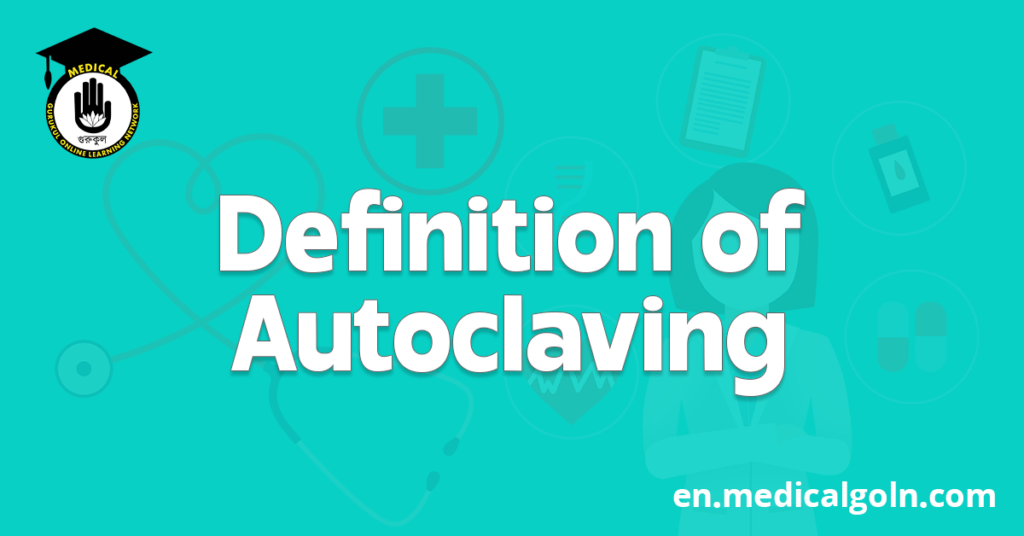Today is our topic of discussion Definition of Autoclaving
Definition of Autoclaving
Principles:
a. At atmospheric pressure, water boils at 100° C.
b. With the rise of temperature the boiling point of water also rises provided no air is present.
c. Steam under pressure unmixed with air has more temperature and more penetrating power.
Structure of an autoclave:
- It consists of an outer iron sheet and inner metallic cylinder.
- The cylinder contains water up to a definite level above which there is a perforated shelf.
- Substances (along with containers) to be sterilized are kept over the perforated shelf.
- Water is heated by gas burner or by electricity and water vapour or steam is produced
- The instrument has recorders for recording of temperature, pressure and also have safety valve.
Pressure and temperature during autoclaving:
At 121° C and 15 lb/square inch for 15 to 30 min.
Uses:
Sterilization of surgical instruments, dressings, gowns, towels and culture media.
Advantages:
1. Most commonly used and effective method of sterilization.
2. Sterilization cycle time is shorter than dry heat or chemical methods.
Disadvantages:
1. Requires a continuous source of heat.
2. Requires equipment which must be expertly maintained to keep it in working condition.
3. Requires strict adherence to time, temperature and pressure settings.
4. Difficult to produce dry packs (e.g., not allowing items to dry before removing).
5. Repeated sterilization cycles can cause pitting and dulling of cutting edges of instruments (i.e., scissors).
6. Plastic items cannot withstand high temperatures.
Recommended disinfection procedure
Faeces and urine:
Faeces and urine collected in an impervious container by adding equal volume of bleaching powder or formalin and allowed to stand for 1-2 hours.
Sputum:
Received in gauze piece or tissue paper and destroyed by burning.
Room:
Thorough cleaning, airing and exposure to direct sunlight for several hours.
Operation theatre:
Suspected tetanus and gas gangrene contamination-Formaldehyde fumigation.
See also :

